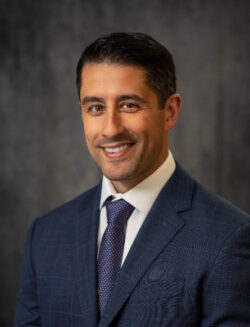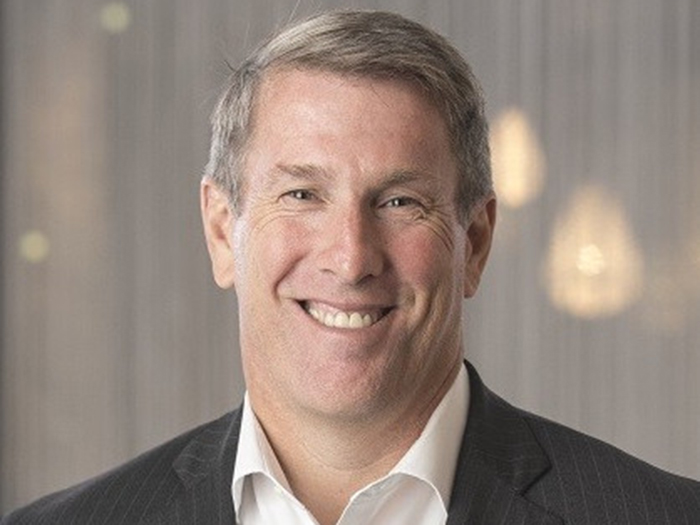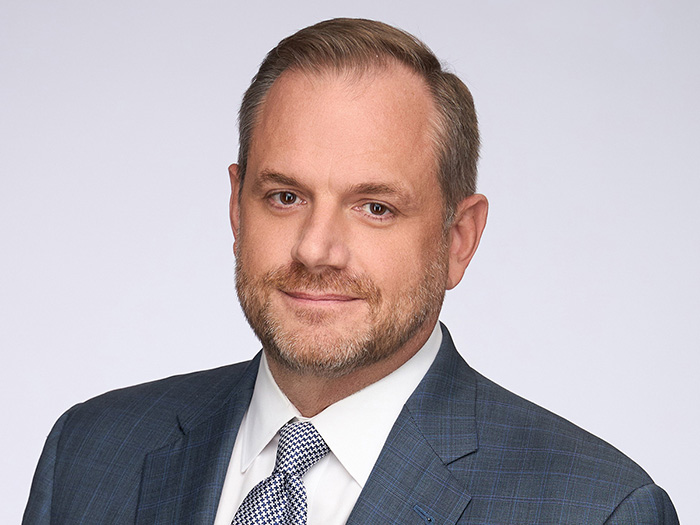Risk Managers with Financial Lines Exposures: Pay Attention to These Key Risks

Risk & Insurance® recently sat down with Vincent Cisternino, vice president of wholesale financial lines at Westfield Specialty, to discuss the key financial risks insureds are facing and the impact of regulatory changes on financial lines insurance.
What follows is a transcript of that conversation, edited for length and clarity.
Risk & Insurance: What are the key financial risks that insureds are currently facing across various industries?
Vincent Cisternino: Financial lines insureds encompass a vast landscape of entities, including virtually any commercial business or nonprofit across all industries, both financial and non-financial institutions. While risk factors can be specific to each insured, there are several key issues that many are currently facing.
One major concern has been the financial strain caused by a sustained period of higher interest rates. We’ve seen an increase in bankruptcies in both sponsor backed and non-sponsor backed companies. Executives are having to make strategic decisions including expense reductions, layoffs, and asset sales to keep their businesses afloat, all of which can lead to potential litigation against the business and their directors and officers.
Another risk factor for many businesses is navigating a changing regulatory environment, with federal regulators like the SEC, CFPB, FTC, as well as state and local regulators, deciding what to enforce, against whom, and when. These regulatory actions and investigations can sometimes be covered under D&O or similar policies depending on the breadth of coverage.
Social inflation is also driving up litigation expenses, while certain industries face antitrust concerns. Even cyber risks, typically covered under cyber/tech E&O policies, can have a financial impact on the business if a cyber event or claim affects an entity’s financials, reputation, or attracts regulatory action.
These are some of the main financial exposures that would generally affect most commercial business or nonprofit insureds, although the specific risks can vary greatly depending on the industry and individual business.
R&I: What regulatory changes or regulations are having the most significant impact on financial institutions, particularly those working with retail consumers?
VC: The CFPB is one regulator the focuses on financial institutions, especially lenders, working with retail consumers. The CFPB closely scrutinizes how these institutions transact with consumers, including the types of fees being charged.
For insured entities, compliance hinges on proper disclosure and adhering to the letter of the law. Nevertheless, even when companies are confident in their compliance efforts, the nature of their industry may render them more susceptible to scrutiny from the CFPB.
R&I: What types of coverage are included in the financial lines for different entity types such as financial institutions, publicly traded entities, private businesses, and non-profits?

Vincent Cisternino, Vice President of Wholesale Financial Lines at Westfield Specialty
VC: For all of these entity types — financial institutions, publicly traded entities, private businesses, and nonprofits — the financial lines include D&O, EPL, fiduciary, and crime coverage.
Specifically for financial institutions, E&O coverage may also be included. This is because D&O and E&O exposures are often blended together for financial institutions, making it difficult to discern whether a loss falls under the D&O or the E&O policy provisions. By combining D&O and E&O coverages in one policy, the insured has the assurance of coverage for certain types of D&O and E&O risks without having two carriers dispute which side may be responsible for the loss.
R&I: What is the current state of the directors and officers insurance market, and how does it compare to the private business market?
VC: The financial lines market, including D&O insurance, is currently experiencing soft market conditions across the board, although some segments are softer than others. Various industry reports highlight the state of the public D&O market, which tends to garner more headlines than the private market.
It’s important to note that while there are approximately 4,300 publicly traded companies in the US, there are roughly 25 million private businesses. This makes the private market significantly larger in terms of financial lines market share.
On the financial institution side, rate changes have generally been more tempered than public and private D&O.
R&I: What are the main challenges you face when assessing exposures and underwriting companies to provide them with the necessary coverage while maintaining a profitable book of business?
VC: Information is the key factor for us. For public companies, there is a wealth of accessible data that can help expedite the underwriting process, reducing our reliance on information directly from the insured.
However, for many financial institutions, private entities, and non-profits, we depend on the information provided in the submission packet. This requires brokers to obtain a comprehensive list of necessary items from the insured, such as applications, financials, capitalization tables, litigation history, organizational structure, etc.
The quality of submissions varies significantly across the market. Sometimes we receive excellent submissions with all the required information, allowing us to process them quickly. Other times, we have to make additional requests of the insured through the broker, it is simply the nature of the business.
R&I: What advice would you give to a risk manager, whether new in their career or experienced, who is trying to build a good relationship with an underwriter and help the broker put together a detailed submission to facilitate the process?
VC: I would advise starting the process early. This allows for more lead time and enables some back and forth with the broker, insured and underwriter, as opposed to trying to get it done in the 11th hour, especially during peak times.
Insureds should be willing to share the required information. Most carriers are prepared to sign an NDA to ensure that the client feels comfortable sending them any information they deem confidential. There are various file sharing platforms and ways to do it to provide the insured confidence that their data is secure.
I’d also recommend asking your broker for the opportunity to speak with underwriters, especially those who are considering a primary or lead position. Make sure that they fully understand your business model, structure, and the challenges that your business faces.
R&I: Does tension exist within companies between risk managers who want to provide detailed submissions and others who may be hesitant to be as transparent?
VC: Yes, that tension can exist. It often comes down to whether the insured views the purchase of financial lines products as a short-term, transactional experience or part of a long-term collaboration.
For insureds who don’t see the value in the product and are buying simply to meet third-party requirements, the decision often comes down to price. They are happy to check a box and show they have the required D&O or EPL limits in place. There are plenty of carriers offering low-cost, low-coverage options for these situations.
At Westfield Specialty, however, we aim to build lasting connections. We believe claims are inevitable, and the process is smoother for all parties – the client, the broker, and the carrier – when there are no surprises. This means the insurer thoroughly understands and is comfortable with the insured’s exposures, size, and business complexity.
We are currently building out a dedicated wholesale platform within financial lines to address more complex risks that require in-depth underwriting and often bespoke policy language that typically come through the wholesale brokerage channel. Our experienced legal and claims teams bring a level of excellence to the relationship and get involved early to make certain we’re drafting something specific to address the needs of each insured.
Westfield Specialty is part of Westfield, a 176-year-old mutual company, built on the principle of long-term associations. This unique perspective allows us to focus on building lasting relationships with our insureds and brokers.
R&I: How has the excess and surplus (E&S) market evolved within financial lines in recent years?
VC: In the last few years, we’ve seen a significant shift in the financial lines market, with more carriers creating dedicated divisions of underwriters to service wholesale financial lines brokers. While it was common in other lines, it wasn’t always prevalent in financial lines.
At Westfield Specialty, we’re adapting to this trend as well. Our unique platform lends itself particularly well to this business, as Westfield Specialty is heavily focused on the E&S market overall.
R&I: What are the key factors in determining the success of an insurer-insured relationship over the long term?
VC: To truly gauge the success of an insurer-insured relationship, you need to evaluate it over a 6 to 10-year period. This is because loss history and claims typically take 3 to 4 years to fully develop, depending on the line of business.
We aspire to have insureds in our portfolio for 6 to 10 years, and longer. Our goal is to never lose an insured over coverage or price issues. Building a long-term collaboration is crucial.
One strategy that has proven successful for us is offering one-on-one calls with insureds. We get on the phone with risk managers, general counsels, and CFOs, depending on the business, to fully understand their operations beyond what the application states. These conversations have been tremendously valuable.
Often, based on these calls, we can modify the policy language to better address the insured’s specific exposures. This personalized approach has been a key factor in fostering strong, enduring relationships with our insureds.
R&I: How are you winning new deals in today’s market?
VC: We’re winning a lot of new deals by being flexible. We try not to “box” underwrite, especially in our wholesale financial lines division. We believe we can find appropriate pricing, terms, and conditions for most risks and it’s that underwriting creativity that has resonated with our wholesale brokers and insureds.
For example, we recently won a deal with a midsized financial institution that had a bank, a broker dealer, an investment adviser, a private real estate fund advisor and other entities under one roof. In this case, the broker was looking for a carrier that could come up with a single policy to cover all the D&O, E&O, EPL and Fiduciary risks for each of these businesses. It required a lot of work from our legal team but was an excellent demonstration of our capabilities.
We even facilitated a conversation between their general counsel and our head of financial lines claims before they decided to purchase our policy. This ensures that if there is a claim, these two people have a relationship, and the general counsel knows they can pick up the phone if necessary.
While this approach means we can’t get through as many deals in a day and have to be more thoughtful about it, it allows us to establish strong relationships with our clients from the outset.
R&I: What is the significance of bringing E&S style underwriting to financial lines, and why is it being done through the wholesale brokerage channel?
VC: Bringing an “E&S style” of underwriting to financial lines is about addressing the needs of complex businesses, situations, or esoteric business models through thoughtful underwriting. Many of these risks come to wholesale brokers who are experts in these fields. We’re catering our offering to the wholesale brokerage channel because that’s where a lot of this expertise resides. &










